

Caerleon
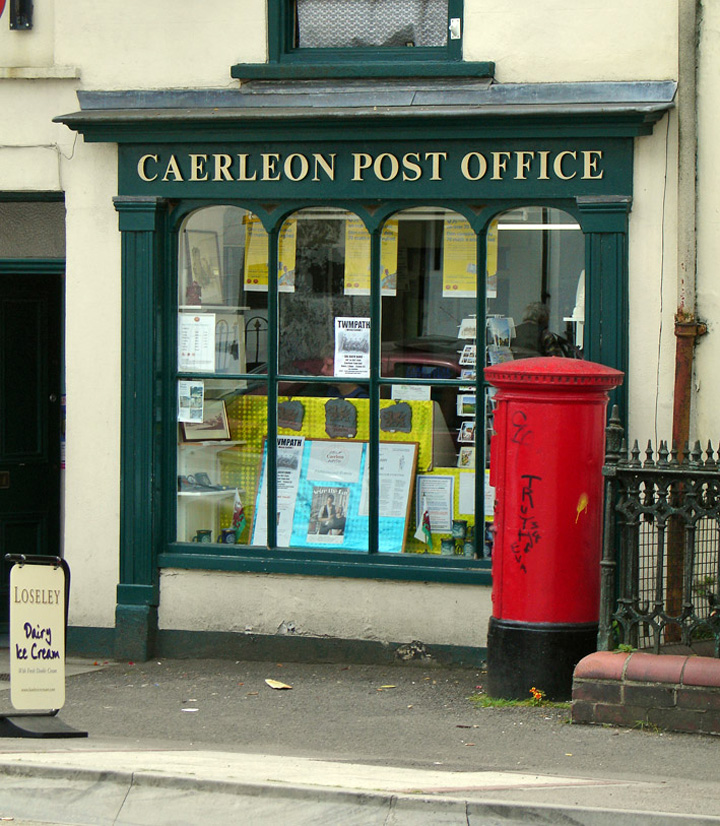
Caerleon Post Office
The old town of Caerleon (or Caerleon
on Usk - i.e. on the banks of the River Usk in south Wales) has long been
associated with the story of King Arthur. Geoffrey of Monmouth wrote his
History of the Kings of Britain around 1140 and this became one of the most
important books of the Middle Ages. The book. supposed to have been based on an
earlier history is the main source of all the later Arthurian legends. King
Arthur ranges far and wide over Britain but for several years he is supposed to
have held court at Caerleon.
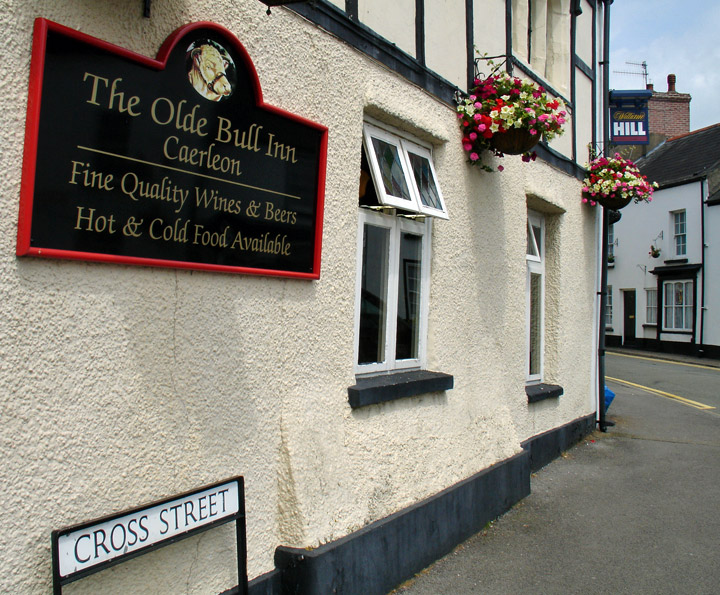
The Olde Bull Inn
The story of King Arthurís Round Table appeared in a work by the chronicler Wace
dating from 11 55. It is tempting to see the remains of the Roman
amphitheatre in Caerleon as a prototype Round Table. Long after the
withdrawal of the Roman legion (II Augusta). Caerleon. would have been one
of the wonders of Britain. The amphitheatre (built to hold an audience of up to
6.000 people) would have been a very impressive ruin and a tangible link with
the dimly remembered. comparative security of Roman times.
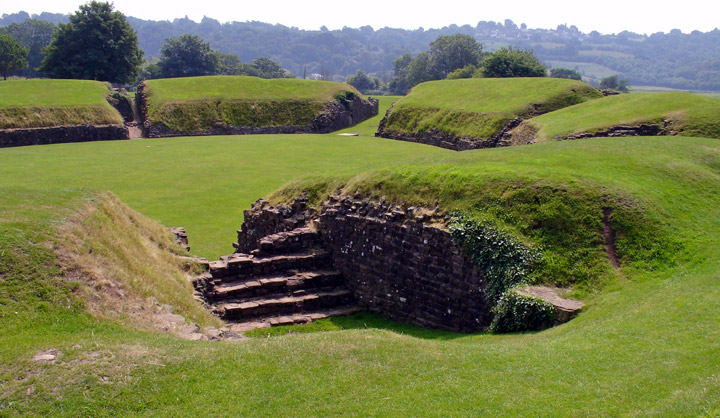
the Roman amphitheatre
More Photos of the Roman Amphitheatre
The amphitheatre was excavated in
1926/7 with support from Britain's Daily Mail newspaper and the Loyal Knights of
the Round Table of America. Little of the structure remains above ground
level but the arena and various entrances are well defined and very evocative.

foundations of the Roman Barracks
More Photos of the Roman Barracks
The foundations of the Legionary barrack blocks and the excellent Legionary museum offer a worthwhile experience. In the museum is a collection of small semi-precious stones collected from the drainage system of the Roman baths. Many of these are engraved with tiny designs and survive as a testament to the skills of the jewelers of antiquity.

Three Roman's and One Celt

school children at play
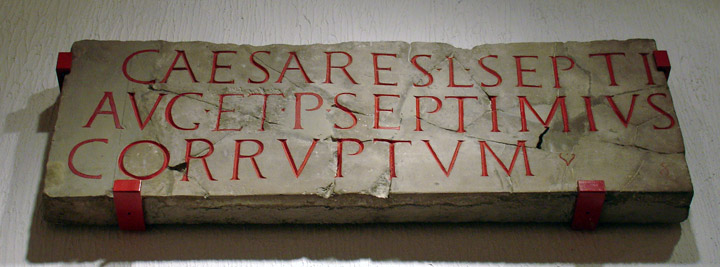
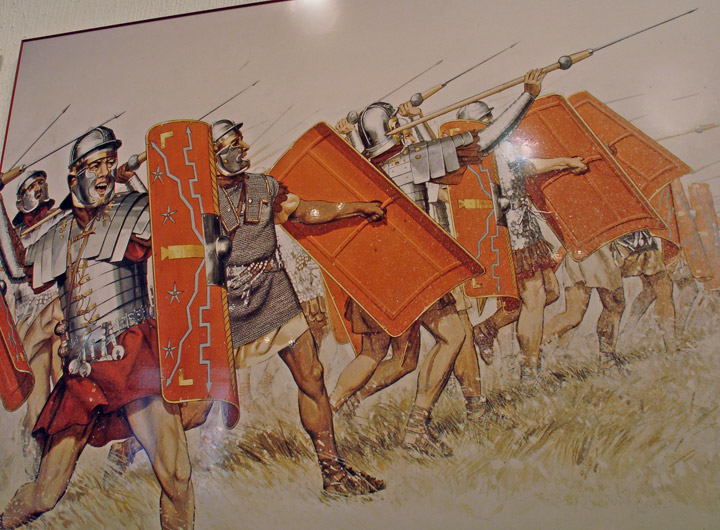
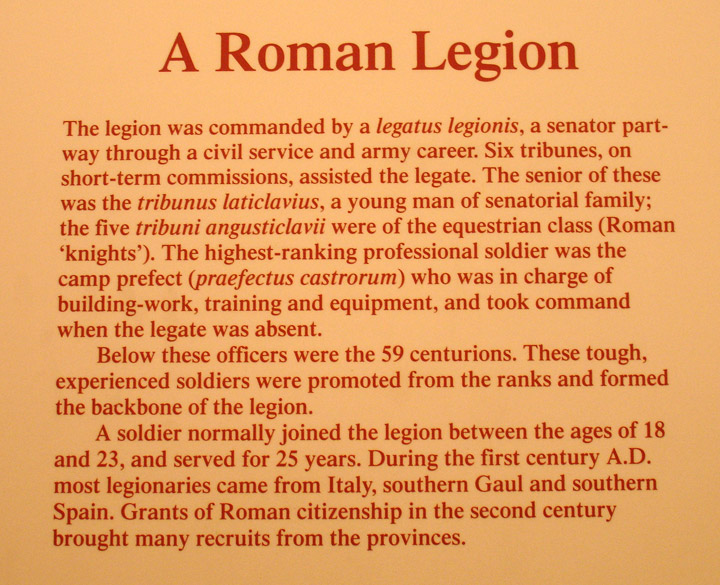
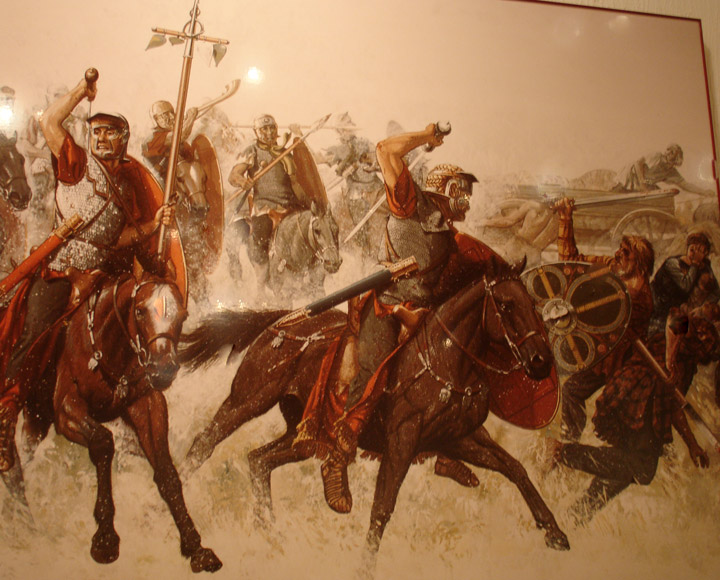
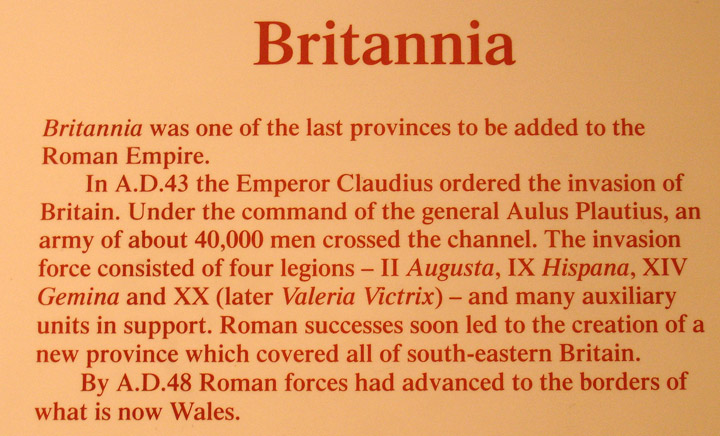
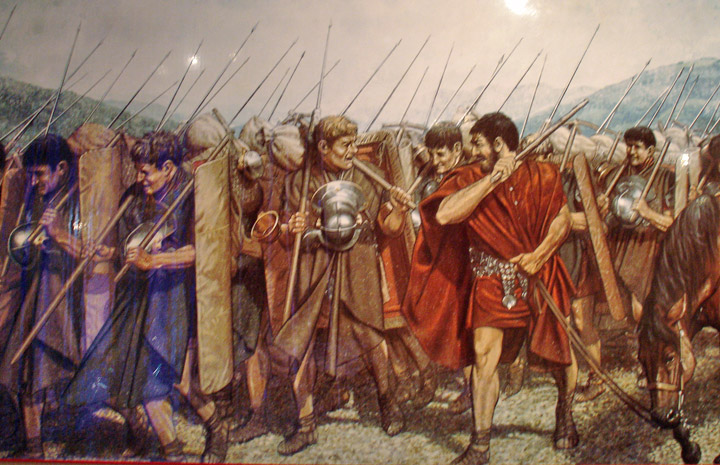
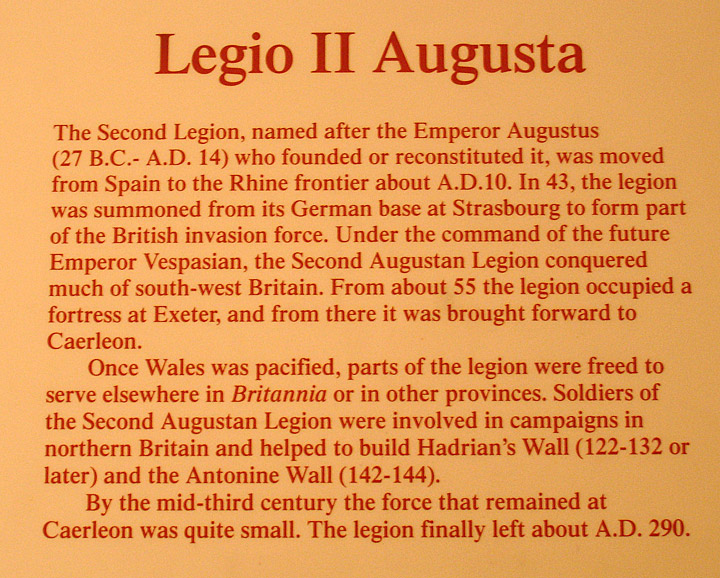
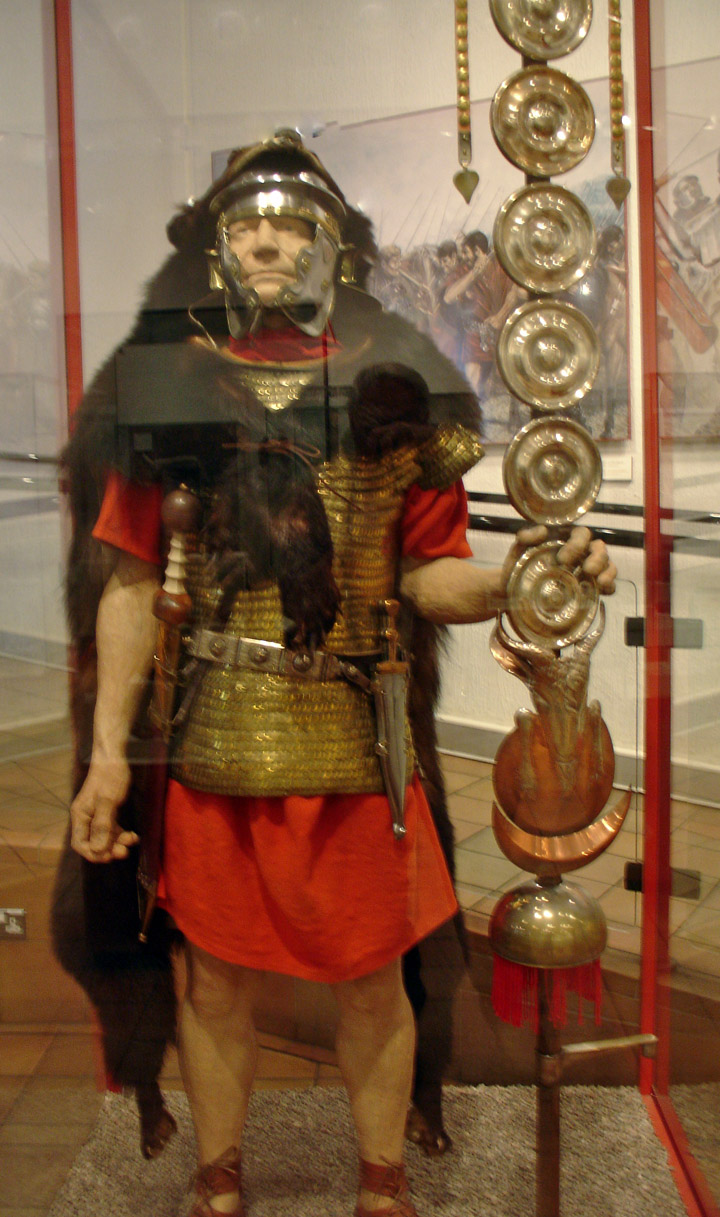
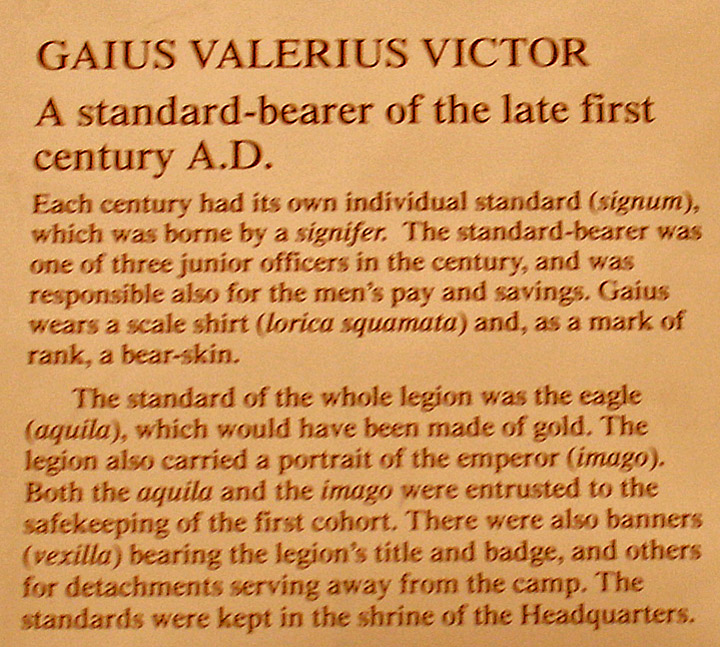
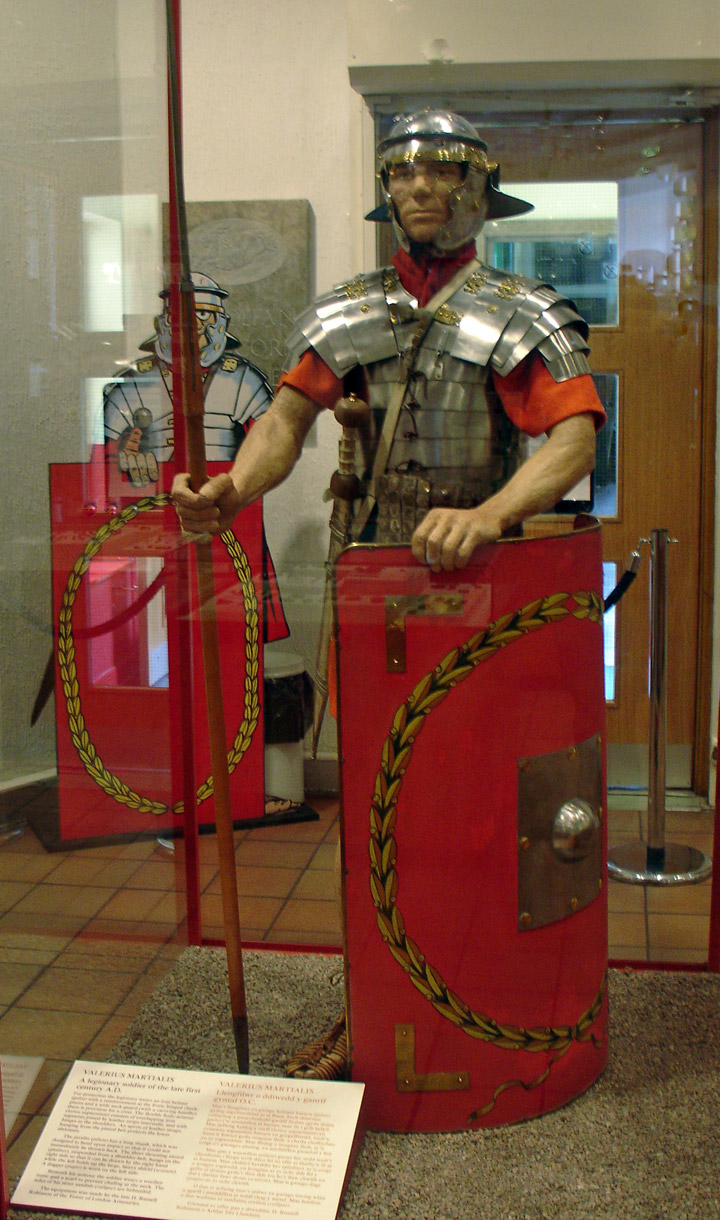
Roman soldier of the First Century A. D.
Return to Wales Elderhostel page